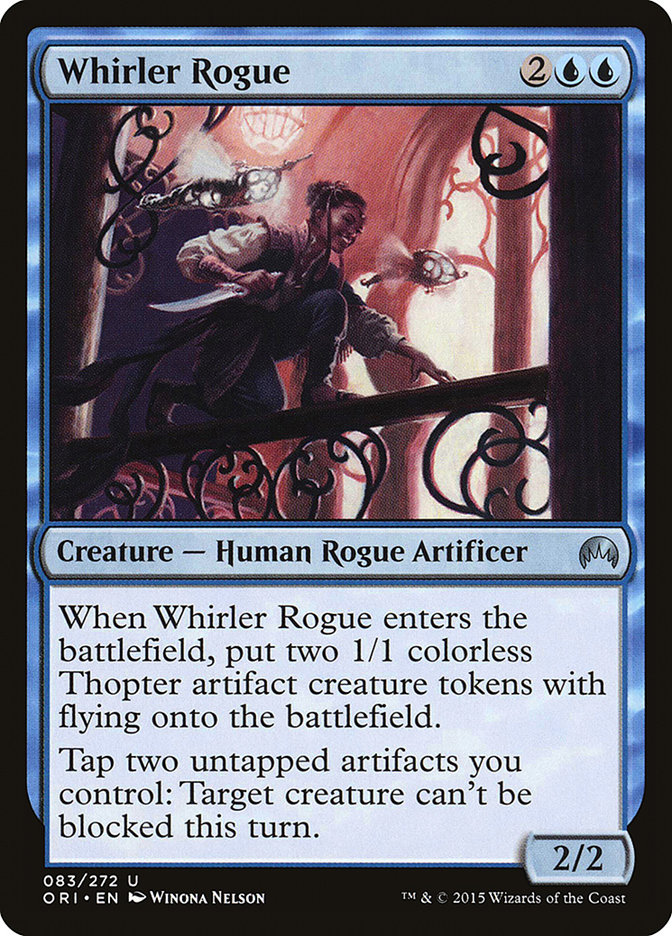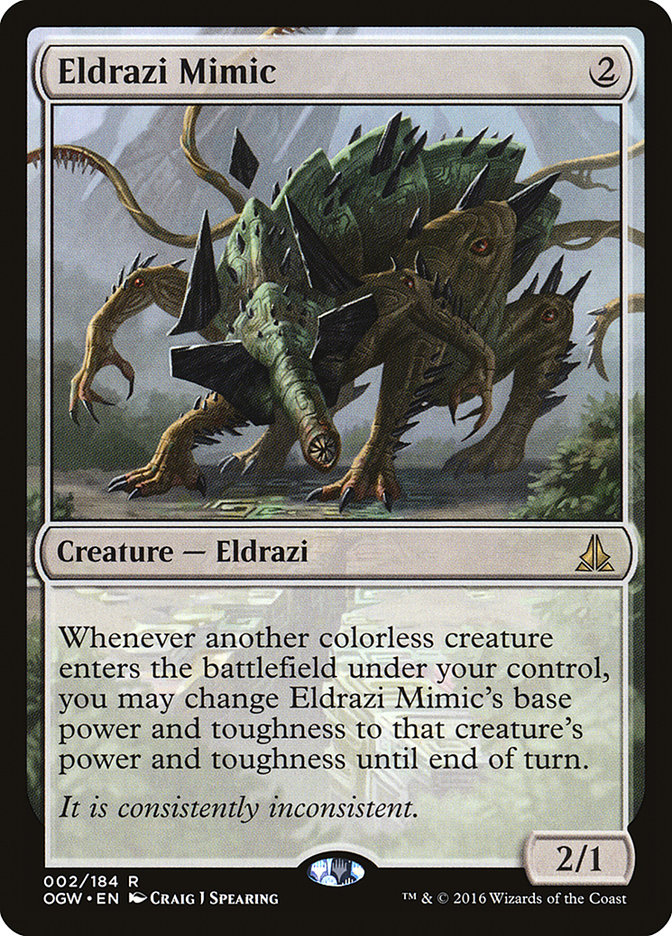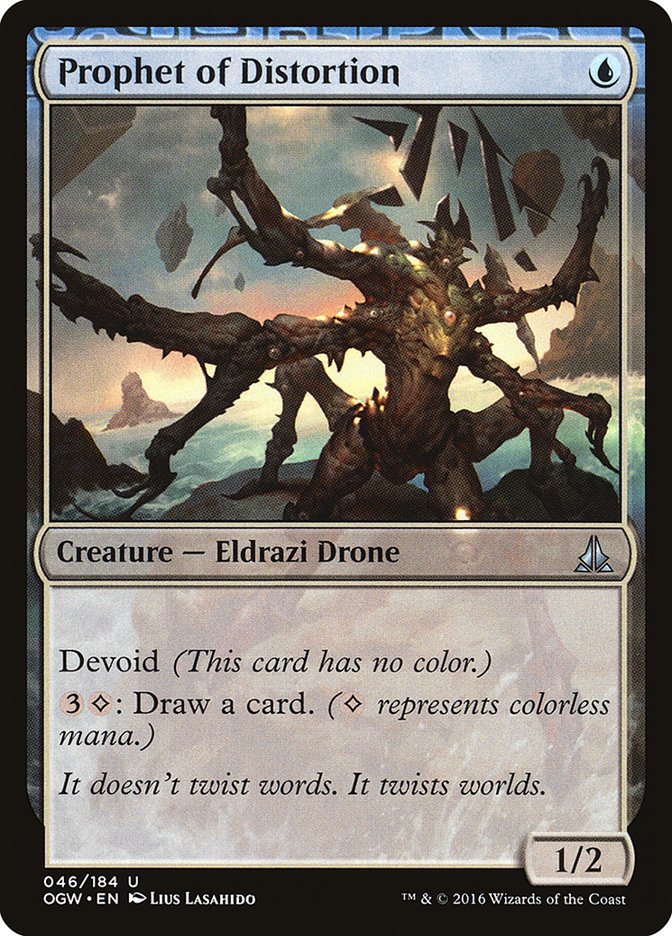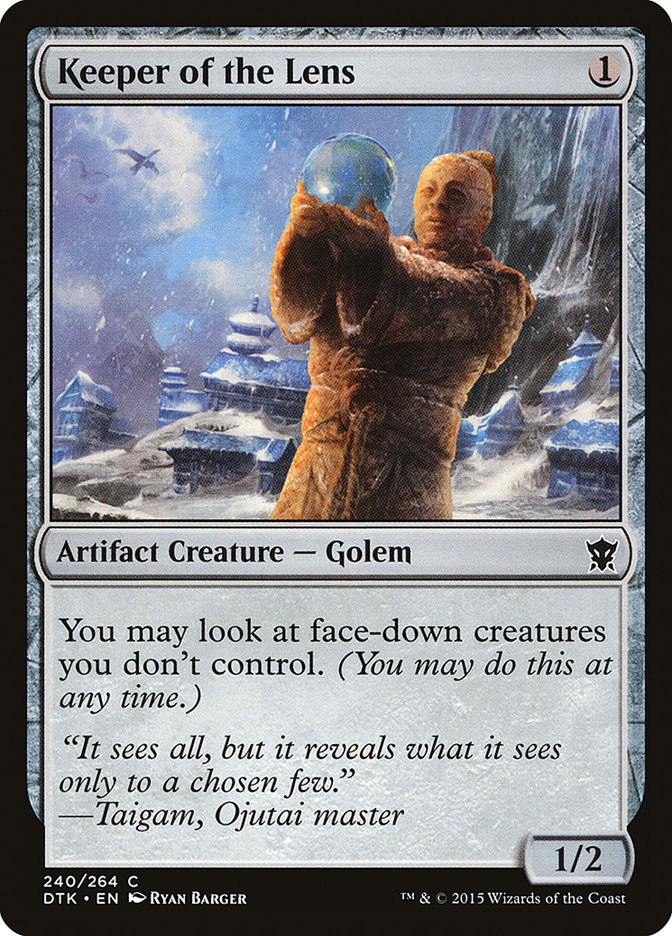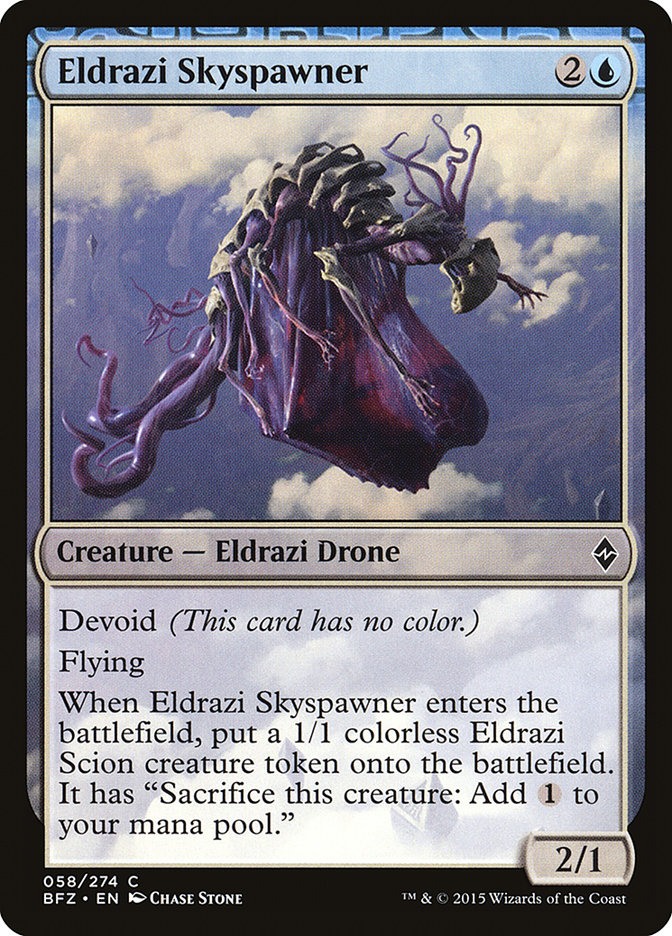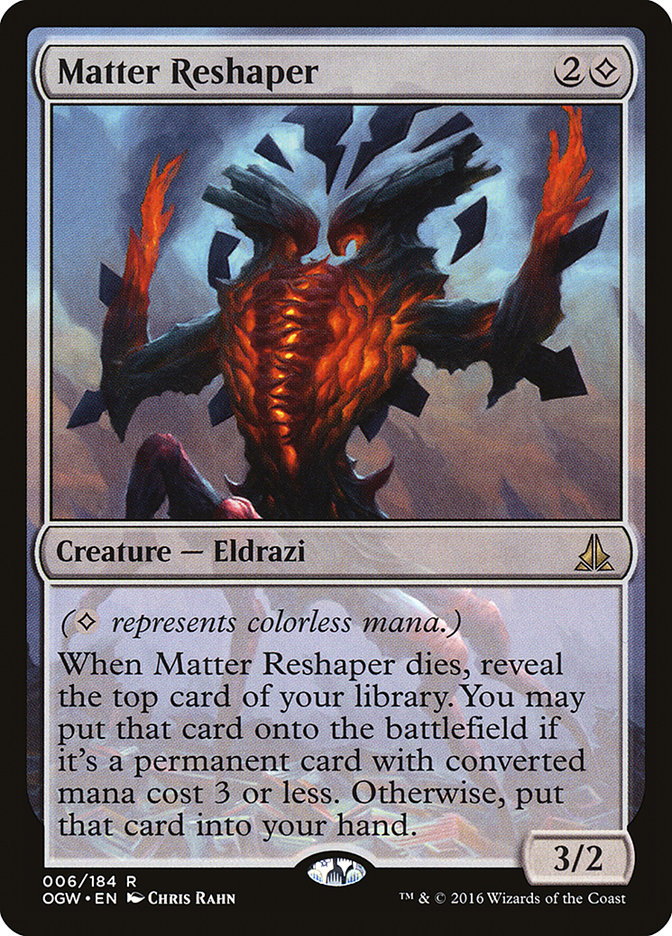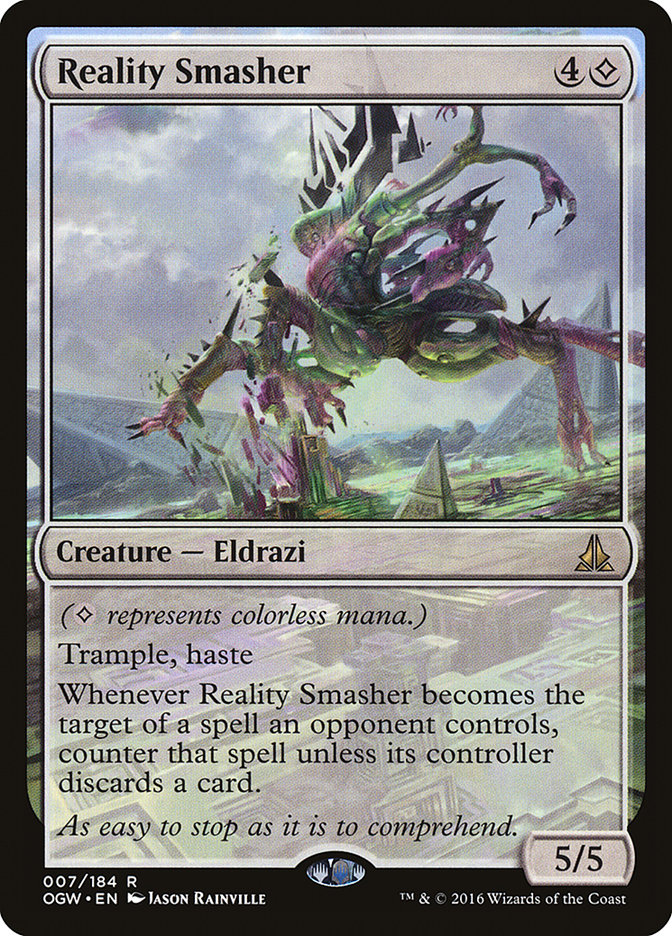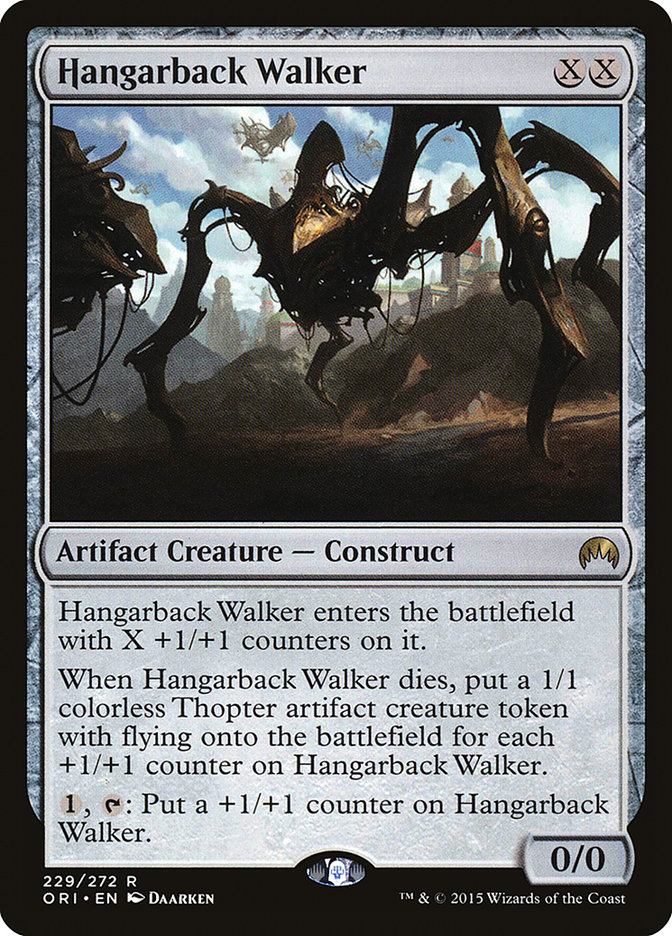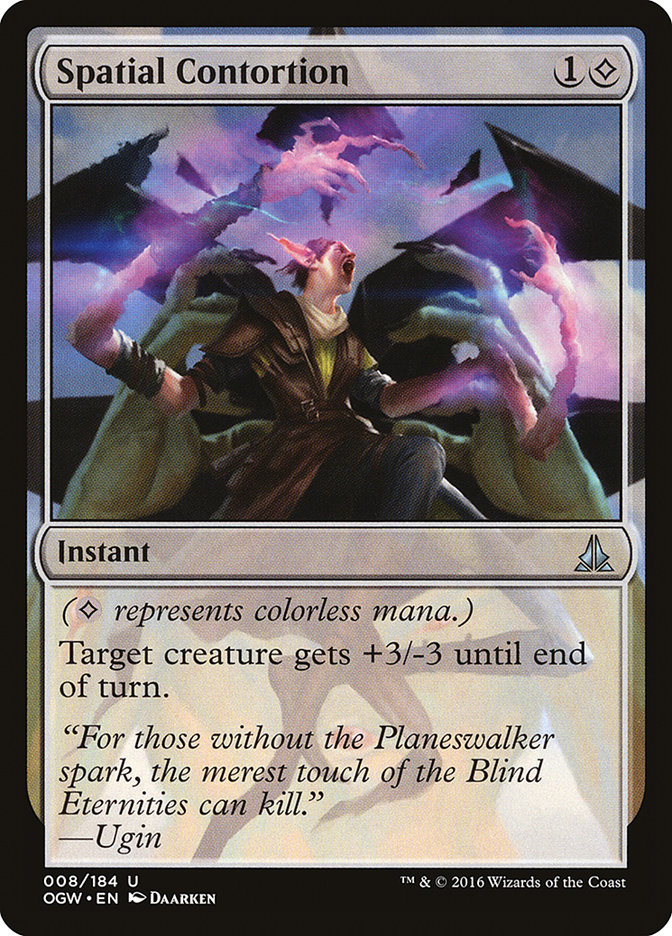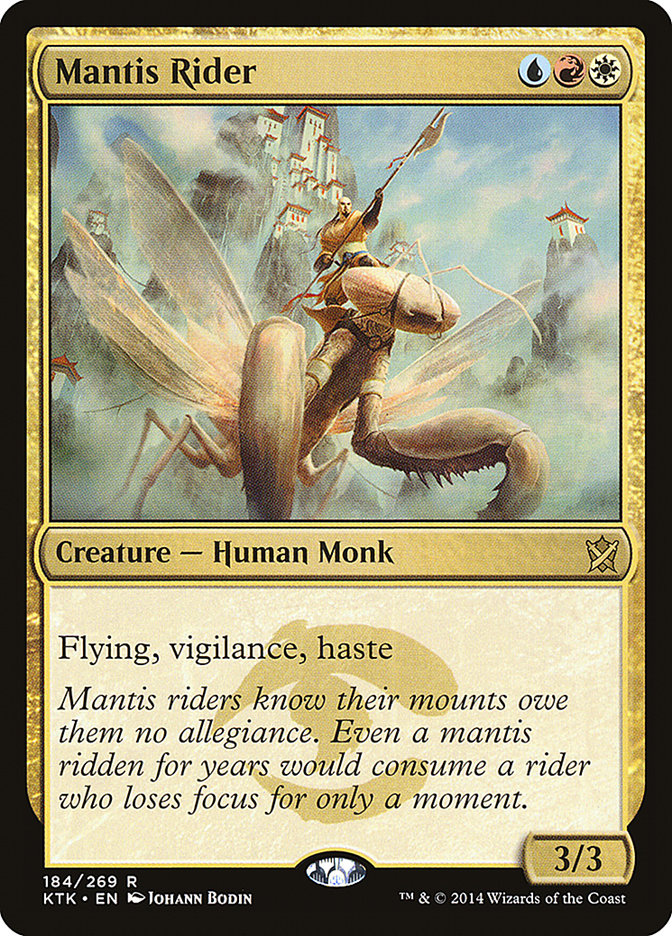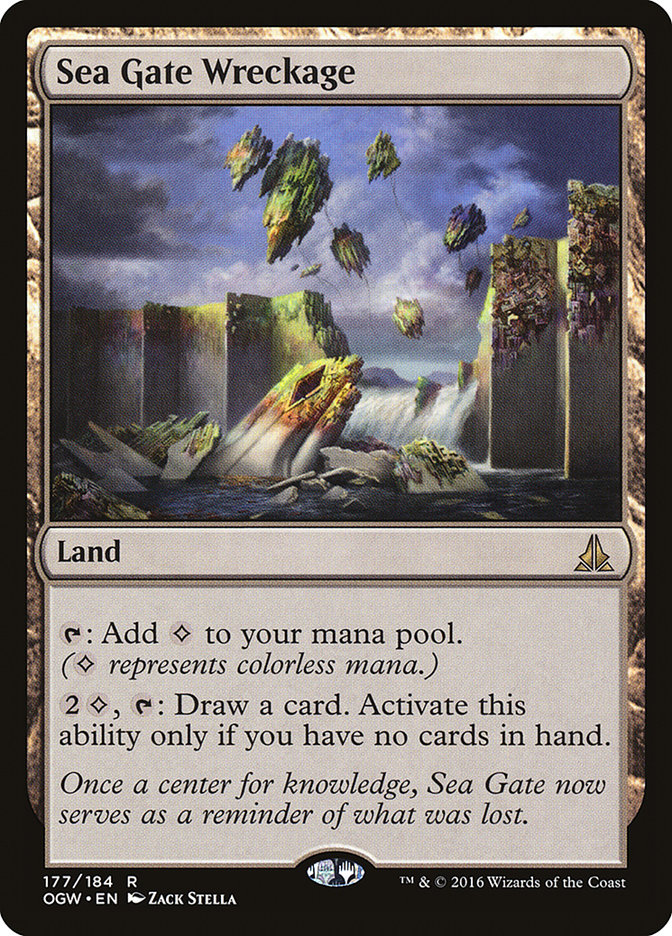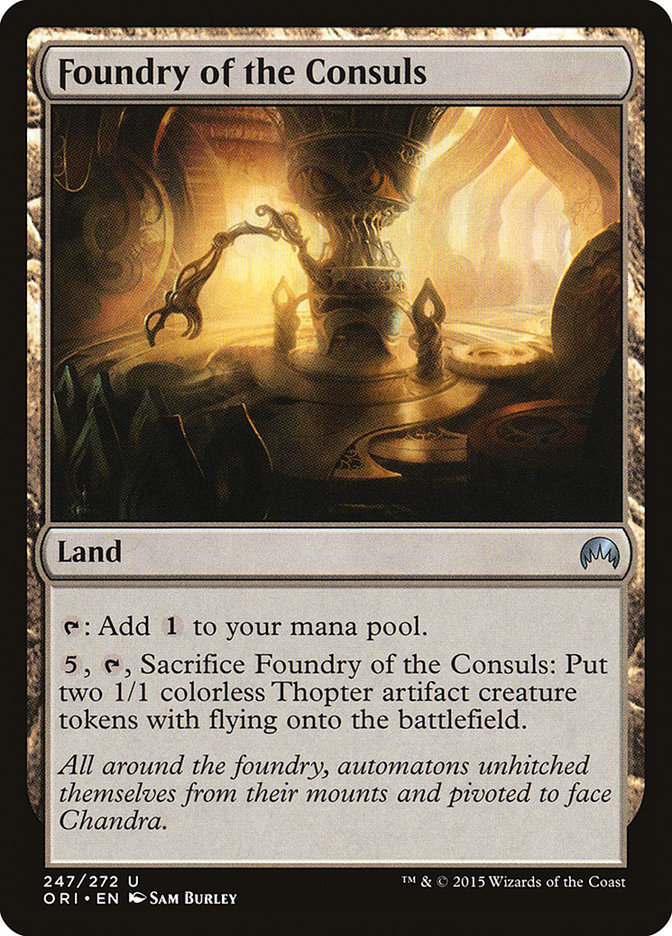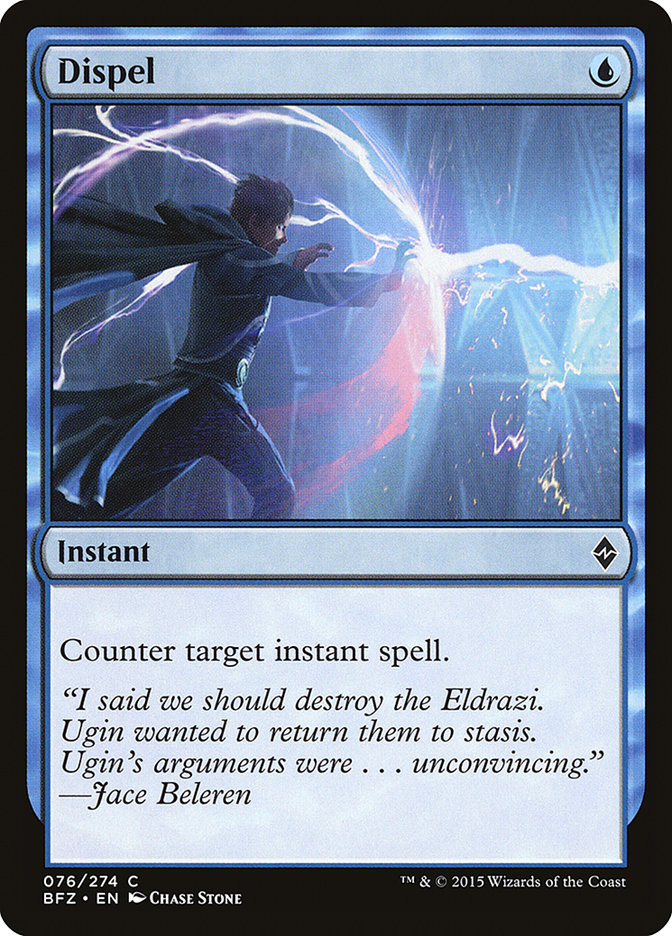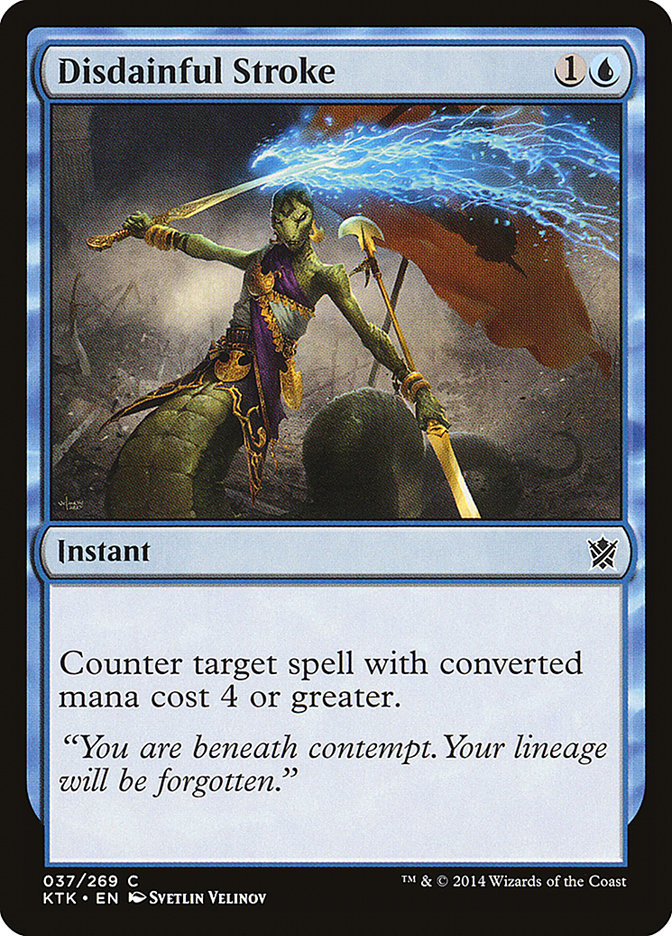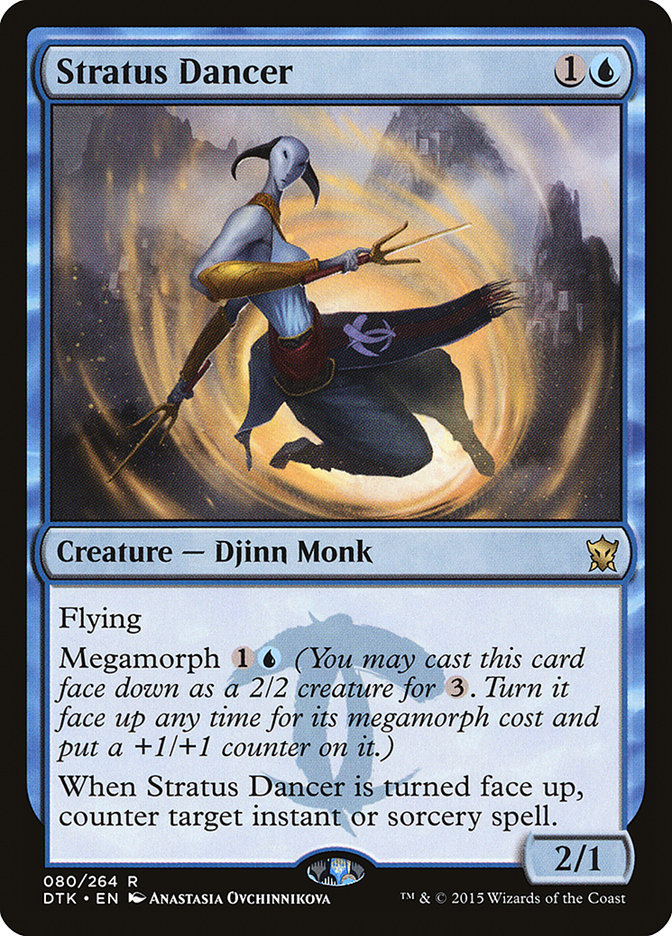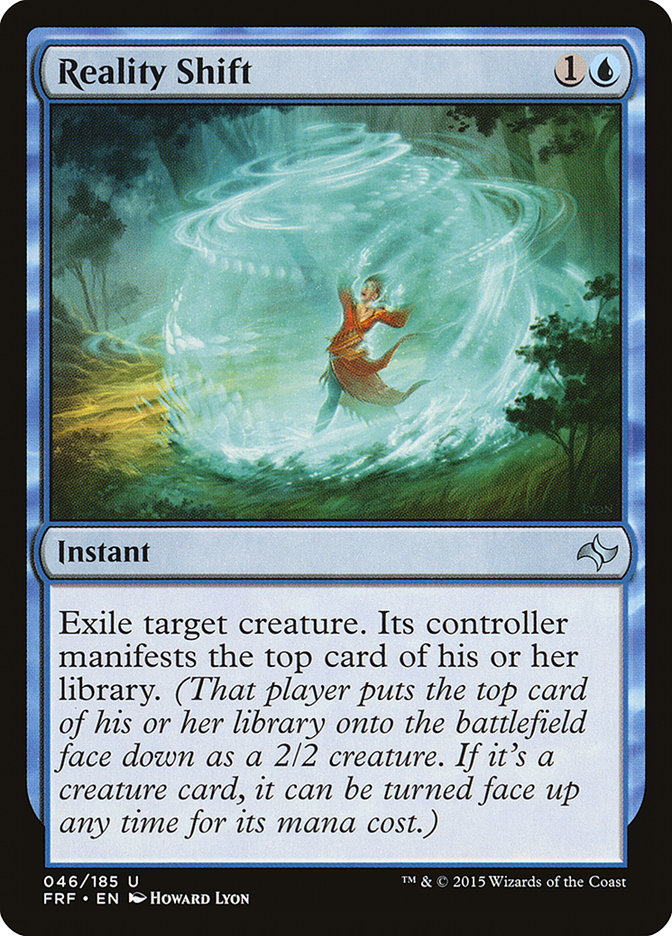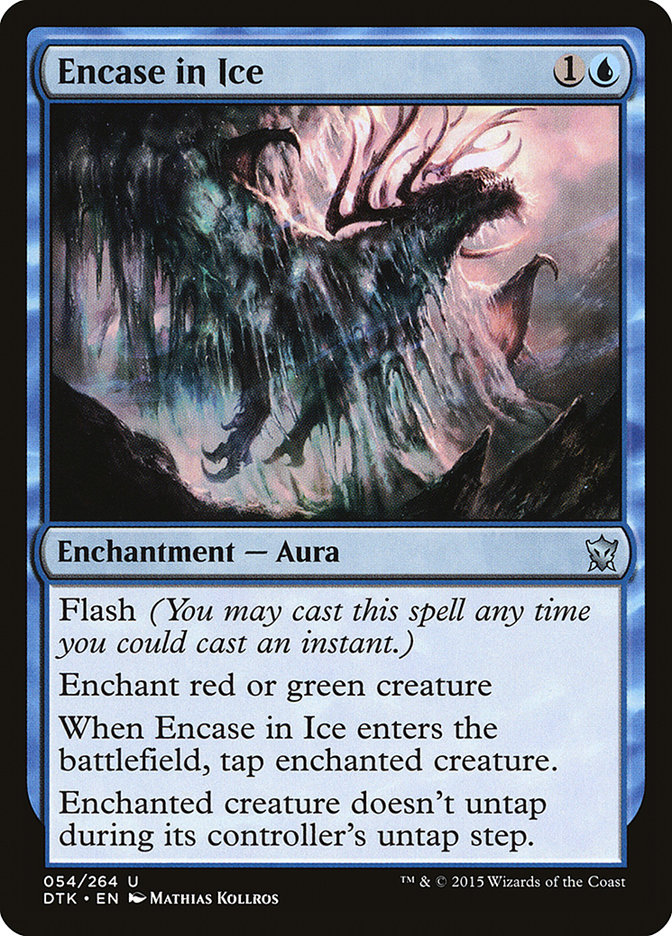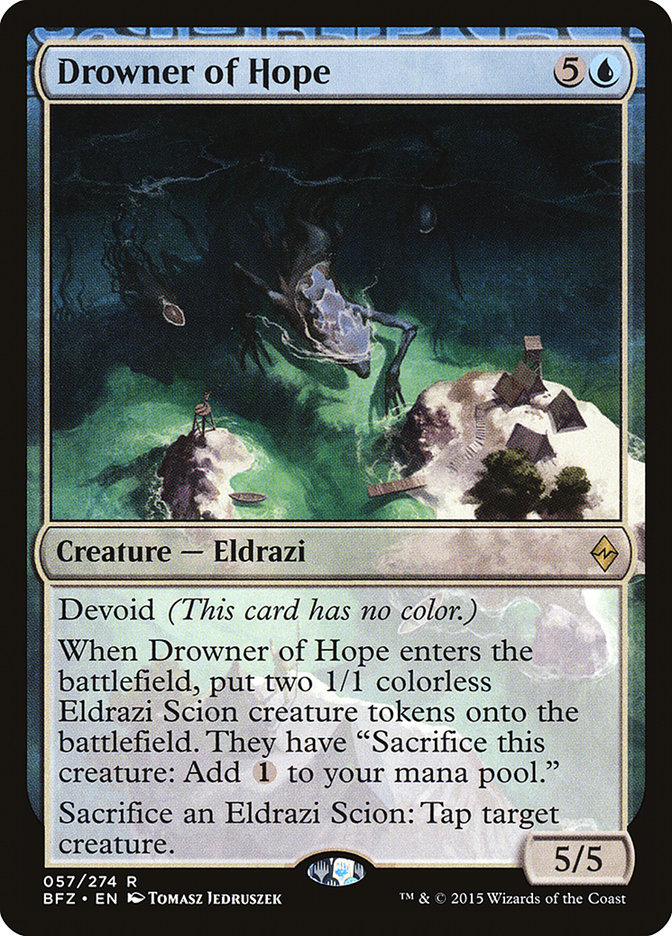 Eye of Ugin and Eldrazi Temple and calling for an emergency banning in Modern after a dominating performance at #SCGLOU. This is an article about a deck with a similar creature base, however. Unfortunately for us, we have to cast these creatures for their full mana costs.
Eye of Ugin and Eldrazi Temple and calling for an emergency banning in Modern after a dominating performance at #SCGLOU. This is an article about a deck with a similar creature base, however. Unfortunately for us, we have to cast these creatures for their full mana costs.
In my journey to discover Standard this week, I played a lot of Ramp and was basically spinning my wheels with a card choice here or there, exploring different sideboard options. At one point I came across a deck I found extremely interesting. I initially kept this deck in the back of my mind, mentioned it to a friend or two, and continued going about my business. Two or three days later, I was told Neal Oliver was championing the aforementioned deck on his stream. I talked to Neal briefly about the deck and he said the original idea was attributed to Tristan Killeen, a friend of ours from his local Magic scene.
This is the list I registered this weekend for a MOCS Monthly event. I wanted to give the deck a spin in a competitive environment.
Creatures (26)
- 4 Whirler Rogue
- 4 Eldrazi Skyspawner
- 3 Ruination Guide
- 4 Eldrazi Mimic
- 4 Reality Smasher
- 3 Thought-Knot Seer
- 4 Dimensional Infiltrator
Lands (26)
Spells (8)

When I first played this deck, it reminded me of Blue Devotion decks from Theros Block Standard. The objective of the deck is to chip away at the opponent’s life total with fliers and unblockable-thanks-to-Whirler-Rogue fatties like Reality Smasher and Though-Knot Seer. It uses Ruination Guide to go wide and punch through damage. Fair warning: this deck requires a lot of combat math and combat decisions, such as when to trade and when to chump block. I’ve won and lost many games by a point of damage or two; if I had made a slightly different decision, it would have altered the outcome of the game.
This deck seems quite simple to build, but after playing it a bit and trying to tune it, it was surprisingly difficult. Thought-Knot Seer and Reality Smasher are obvious inclusions on the top end, but at the two- and three-drop slots, there are more options than you may think. Let’s discuss the creature suite to get a better understanding of the choices.
The Creatures
First or all, let’s take a look at the two-drop (or less) slot.
Dimensional Infiltrator is exactly what we are looking for. An evasive two-drop with flash that gets equipped on the cheap with Ghostfire Blade? Sign me up.
Porting over from the Modern Eldrazi decks, we can simply add Eldrazi Mimic. This seems intuitive, but surprisingly, I have been underwhelmed paying a full two mana for Eldrazi Mimic. Not seeing Mimic grow until turn 4 or 5 sometimes makes the card a lot more like an Alpha Myr than the beast it was in Modern, where it could be cast for free off an Eye of Ugin and start growing every turn after.
Ideally you want your creatures to all work well with Ghostfire Blade, so much like Phyrexian Revoker was in the U/R Ensoul Artifact deck I played at Pro Tour Origins, you can play some worse cards for synergy if they are important curve fillers.
We do have other options in the one- and two-drop slots, however. I tried Hangarback Walker and it was very unimpressive. The deck curves out smoothly and there is rarely an opportunity to hold up mana to activate Hangarback Walker. We also just want to be attacking as much as possible, so waiting a few turns to attack with Hangarback isn’t that exciting. The potential of your Hangarback Walker to get targeted by a Reflector Mage is a disaster. I could see Hangarback Walker being a sideboard option against sweepers, however, to shore up another of the deck’s weaknesses.
Another possibility is Prophet of Distortion. Now, this is a card that I expected to be bad, and it was worse than that. You’re basically playing Keeper of the Lens. Activating Prophet’s ability to draw a card is an extreme rarity because of how mana-hungry the deck is and how important it is to flood the battlefield. It is nice to be able to play it on turn 1 and then cast and equip a Ghostfire Blade on turn 2 and get in for three, but that just isn’t always going to happen and the Prophet is just way too underpowered.
The one-drop into turn 2equip did get me thinking, however. Maybe Endless One is a good option? I haven’t personally tried it to this point, but it is next on my to-do list. It’s a card you can play as a one mana 1/1 when you have a Ghostfire Blade to equip, but you can also play it on any turn of the game and spend all of your mana doing so. It’s possible the correct build plays this card as the “two-drop” that it is currently filled by Eldrazi Mimic.
With the three-mana creatures, there are fewer options but the options are closer in power level. Again, we want to win with evasion, so Eldrazi Skyspawner is a great roleplayer here. The second option is a little more complicated. It clearly comes down to Matter Reshaper and Ruination Guide for me.
Matter Reshaper provides us a little bit of resiliency to sweepers and can attack into opposing creatures. If they block, we have the potential to put another permanent onto the battlefield for free. Ruination Guide is the three-drop I prefer, however. Ruination Guide acts as a lord to all of our creatures and plays quite well with Eldrazi Mimic. When it enters the battlefield, it checks the power and toughness of Ruination Guide and then it gives the bonus, making Mimic a four-power attacker on turn 3.
Also of note: Ruination Guide gives double the bonus if it is another creature entering the battlefield. If a Reality Smasher enters the battlefield, it is a 6/5 when it enters the battlefield, turning Mimic into a 6/5, but then the Guide gives it another power. Ruination Guide also curves quite nicely with Whirler Rogue. Rogue can make Guide unblockable, so it doesn’t die in combat, and then leaves two 2/1 fliers behind for the follow-up turn.
The four- and five-mana creatures are quite simple. Thought-Knot Seer provides some disruption and a big body, and you can clean up the game with Reality Smasher. In testing, however, I don’t know if I want seven of these high-end drops, because games in which you draw too many go downhill quickly. I think I might want to cut a Reality Smasher and potentially another Thought-Knot Seer and move them to the sideboard.
Whirler Rogue is the best card in the deck. Whirler Rogue glues the deck together so well, providing unblockable status to our fatties while also giving us the ability to go wide. I’ve seen versions with only three and I think that is a mistake.
The Spells
The deck is obviously designed in a way to take advantage of Ghostfire Blade. Ghostfire Blade is a cheap and resilient way to deal a lot of damage in the hands of a flying creature, though, as I mentioned before about Hangarback Walker, it can sometimes be difficult to decide between equipping a creature and casting a smaller threat or casting a higher-costed creature such as Thought-Knot Seer. Remember that sacrificing an Eldrazi Spawn to equip a creature is a reasonable play.
That leaves the two Dispel and two Spatial Contortion. These are the slots I’ve tinkered with the most in my maindeck. Much like the Blue Devotion deck, it’s important to flood the battlefield and be proactive. With equipment in our deck, we want to play a lot of creatures, and that leaves room for only a few interactive spells. That said, some creatures just have to die for us to win. Mantis Rider is a big problem for this deck because of how effectively it can block a lot of creatures while still attacking making racing difficult.
Luckily, Mantis Rider is on the decline, so we don’t have to devote too much attention to it. Jace, Vryn’s Prodigy is another obvious creature that can create nightmare battlefield states. Spatial Contortion can also just be a tempo-positive play when we don’t draw a two-drop. Often our hand will be a Spatial Contortion and a few three- and four-mana spells. These games, I advise to use your mana efficiently and kill any moderately relevant creature, because you will likely be tapping out the rest of the game. For these reasons a couple of copies of Spatial Contortion are effective.
Dispel maindeck is a concession to the popularity of Collected Company decks. Pulling ahead on the battlefield with fliers against Four-Color Rally and then countering their two instants (Rally the Ancestors and Collected Company) is our path to victory. The original list I saw had Stubborn Denial maindeck. I didn’t see too many advantages to having Stubborn Denial outside of the Ramp matchup. The problem I had with Stubborn Denial is that it often requires a creature equipped with Ghostfire Blade to become a hard counter.
Equipping a creature, casting a creature, and then holding up a mana for Stubborn Denial is a challenge, and that’s only if you actually have the Ghostfire Blade. Often the Four-Color Rally player would cast a turn 3 Catacomb Sifter and then the Eldrazi Spawn would make the Stubborn Denial less than optimal. Stubborn Denial, however, is much better against Ramp and actively good against them for the sole reason that they have to spend all of their mana every turn to ramp effectively. This makes the Force Spike mode much more reasonable.
If you expect a reasonable mix of Ramp and Four-Color Rally, playing Stubborn Denial may be better than Dispel after trying both, but I am not completely sold one way or the other yet.
The Lands
The manabase looks a bit weird. It has seven blue painlands in addition to nine Islands, four copies of Tomb of the Spirit Dragon, four copies of Foundry of the Consuls, and two of Sea Gate Wreckage.
I was on 25 lands for a while with only one Sea Gate Wreckage, and after playing 26 for a while, I think I’d like to scale back to 25. Flooding is usually not a huge deal because the lands are pretty good to sink mana into. Tomb of the Spirit Dragon is simply great when it comes down to winning a race. A free way to spend three mana to gain three to five life is extremely valuable in close games, which this deck tends to be involved in.
Foundry of the Consuls is also excellent. Foundry gives us the ability to make instant-speed 1/1 flyers that can hold a Ghostfire Blade and do the last crucial points of damage. Foundry can also just be used to create two artifacts to make a creature unblockable with a Whirler Rogue to do the last few points of damage.
Sea Gate Wreckage is fine but activating it is generally too slow. I think it’s the best available colorless land left in our arsenal and I have won a grindy game or two by drawing an additional two to three cards off of it. Another consideration I have seen in versions of this deck is Ruins of Oran-Rief, but this card suffers from the same issue as Hangarback Walker. The deck is too mana-hungry to afford a land entering the battlefield tapped unless it’s on the first turn.
Even then, it isn’t mana-efficient to cast creatures in the early turns and tap our leftover land to put a counter on a creature when that mana can be used to hold up a counterspell or equip a creature with Ghostfire Blade. I find that this manabase is pretty solid, and the only questions left with it are “25 or 26 lands?” and maybe potentially changing one blue painland to an Island. I’ve yet to have issues casting a colorless spell, but I have taken two damage casting Whirler Rogue quite a few times.
The Sideboard
I’ve registered a drastically different sideboard in almost every event I’ve played because I wanted to find out how good some of the options were. As this deck and the metagame are still fluid, I’ll go over some of the top contenders and where they are useful.
Dispel is a card I want a minimum of three of in my 75-card decklist, but I really recommend playing all four. Collected Company decks are slowly taking over Standard and they must be stopped. Dispel is an all-star against Four-Color Rally and plays very well against Dig Through Time decks with instant-speed removal.
Disdainful Stroke is another card I want three to four of in my sideboard. It’s important to have answers to high-impact creatures such as Siege Rhino, Goblin Dark-Dwellers, and Kalitas, Traitor of Ghet. Also, it’s important to have counters for basically anything Ramp decks can cast, and Disdainful Stroke is our best option there.
After playing a long tournament without any Negate, t’s definitely a card I want access to. It was very difficult to win games where my opponent would cast Radiant Flames, and without Stubborn Denial in my deck, I learned a valuable lesson. Stratus Dancer isn’t reliable enough to counter a sweeper because it’s very obvious what your morph creature is. They can just make sure to use a spot removal spell on it first and then follow up with a sweeper. In the future, my sideboard will have two copies of Negate for the grindy matchups, such as Grixis Control.
Stratus Dancer is excellent out of the sideboard and it even leaves me pondering if maybe two should be maindeck instead of whatever lackluster two-drop we choose to play. Its biggest downsides are how obvious it is and how it’s too expensive to equip Ghostfire Blade to when it’s cast as a two-drop.
This is the kind of card I don’t particularly like sideboarding in because it doesn’t seem very high-impact. Yet we are limited on options when playing only one color, and Matter Reshaper does upgrade the Ruination Guides against grindy decks with sweepers.
Ruination Guide, Eldrazi Skyspawner, and Whirler Rogue are all cards that incentivize us to play into sweepers. By sideboarding in your Matter Reshapers for Ruination Guides against sweepers, a card like Radiant Flames isn’t as backbreaking. Hangarback Walker could also be considered in this spot or in addition to Matter Reshaper as a package to bring in against sweepers. That might be overdoing it, however, and I think Matter Reshaper is the better of the two options because it attacks better.
This was a concession to the recent popularity of Kalitas, Traitor of Ghet. I definitely will not register this card again, however, because it is simply too reactive. We are better off trying to counter Kalitas or just fight through in the air or with Whirler Rogue activations.
Encase in Ice is a fine answer to Siege Rhino and Anafenza, the Foremost, but it also comes at the cost of being sacrificed to Dromoka’s Command. With the popularity of Kalitas, it can also be awkward to have your sideboard removal spell not deal with one of the most problematic creatures.
This is one I haven’t tried but might just be a better one-of than Reality Shift for targeting Kalitas, Traitor of Ghet. We can’t always cast the card, though, so I would advise against it.
I have had one Drowner of Hope in most of the iterations of my sideboard. Drowner is solid in the grindy matchups like Mardu Green, where the battlefield can stall out a bit.
Thought-Knot Seer has been a swingy card. Most of the time I am unhappy with Thought-Knot Seer because of the popularity of Reflector Mage, but it plays well post-sideboard against sweepers like Radiant Flames or Flaying Tendrils. It lives through these effects and can take whatever other removal is left in their hand. Thought-Knot Seer is also an all-star against Ramp decks, allowing us to pick up a big creature or key piece of ramp while also being quite difficult for them to kill.
I really like having a Nameless Inversion to combat troublesome creatures. It provides us the ability to kill Jace, Vryn’s Prodigy; Mantis Rider; and Monastery Mentor. It’s a huge tempo swing against Bant Company decks. Their plan is similar to yours in that they want to add creatures to the battlefield every turn while bouncing and tapping other creatures to sneak in enough damage. When you kill their first creature, it can account for a lot of damage saved by the end of the game. I will likely sideboard up to four Contortions in the future.
My likely build from here on out will be as follows:
2 Dispel
2 Negate
If I add Stubborn Denial back to the maindeck instead of the two Dispels, I will likely add one more Stubborn Denial to the sideboard instead of a Negate.
I think Eldrazi Blue is a solid deck and has a chance to be a contender with a little work. It is quite refreshing playing with some new cards in Standard. I’ve had a lot of fun playing this deck and I think you will too!

